#septimius severus is the exception
Text
Me looking into the family tree of the Syrian branch of the Severan Dynasty:

#ancient rome#roman empire#mark antony#most of the severans in the syrian branch are possible descendants of cleopatra vii and mark antony#septimius severus is the exception#this would mean the Syrian branch of the Severan dynasty are possible deacendants of the 2 generals that rode with alexander the great#that being ptolemy i soter and seleucus i nicator#also possibly descended from apama
7 notes
·
View notes
Text
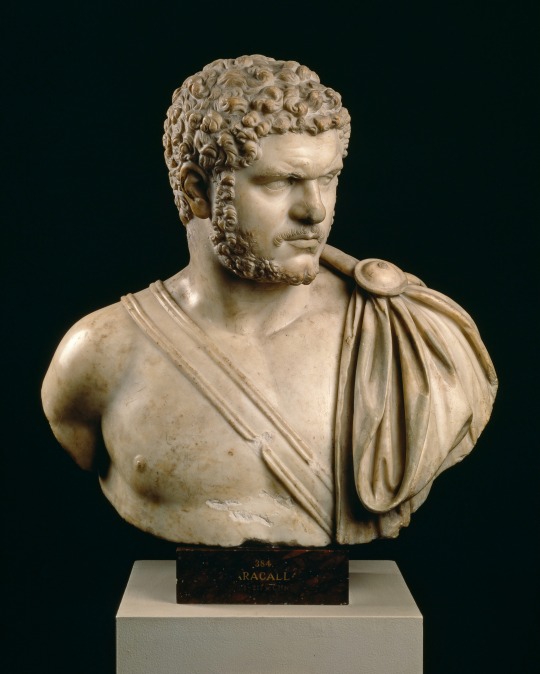
Emperor Caracalla as sole ruler, 212-17, white marble, h. 57 cm, Altes Museum, Staatliche Museen zu Berlin, Berlin.
Marcus Aurelius Severus Antoninus, given the nickname Caracalla (after a hooded Gallic cloak) even during his lifetime, came to power with his younger brother Geta after the death of their father Septimius Severus (r. 193–211). Their coregency suddenly ended when Caracalla ordered the death of Geta and many of his supporters in 212… In Mesopotamia on April 8, 217, after five years as sole ruler, Caracalla too was murdered.
Caracalla looked to Alexander the Great as a role model and sought to imitate him in both conduct and appearance. “He was such a passionate devotee of Alexander’s that he used certain weapons and drinking cups that he thought had once belonged to Alexander. He also set up many portraits of Alexander…” (Cassius Dio, Roman History 78, 7, 1). Caracalla supposedly modelled himself on the Macedonian ruler even in his gestures and facial expressions.
The Berlin portrait depicts Caracalla’s head and entire upper body, as was popular among portrait busts from the second century AD onward. Except for the general’s cloak draped over his left shoulder and the sword belt across his chest, the emperor is nude. The nudity combined with the military trappings elevates him above the realm of the everyday into a heroic sphere. His head is stocky and compact, and turned strongly towards his left shoulder. His hair, rendered in knotlike tufts, lies close to his skull. The tufts at the center of his forehead are clustered together and point upwards, perhaps a play on Alexander the Great’s hairstyle (anastole). A short moustache and beard complete the coiffure. The facial features are full of energy: numerous horizontal and vertical creases on the forehead and bridge of the nose accentuate the powerful movement and drama of the whole physiognomy. The effect is heightened by the partially shaved chin and the small, slightly open mouth. The portrait follows not only images of Alexander but also those of athletes.
In AD 212 this portrait type, the so-called “sole ruler” type, replaced the portrait of Caracalla as the young successor to the throne. It remained in use until AD 217. In presenting himself as a vigorous autocrat living up to athletic and military ideals, the emperor represented himself in a manner very different to that of his predecessors.
— text via Google Arts & Culture (© Verlag Philipp von Zabern, Antikensammlung, Staatliche Museen zu Berlin).
22 notes
·
View notes
Text
A vigorous nation can survive a long period of revolutions and bad government, conditions to which the ancient world was only too well accustomed. But the two great races of antiquity were no longer vigorous.
The system of city-states is a forcing-house of genius, but terribly wasteful of the best elements in the population. From the fifth century B.C. onwards, war, massacre, and banishment steadily eliminated the most virile members of the Greek cities. Originally a very prolific race, as is proved by the extent of its colonisation, the Hellenic stock dwindled rapidly. The Spartiates became almost extinct. Polybius speaks of Greece generally as an empty country, and by the time of Plutarch large tracts of land were absolutely deserted. The decline was in quality as well as quantity; by the time of Cicero the Greeks had already ceased to be a handsome people. Complete racial exhaustion had practically destroyed the Hellenes before the period which we are considering.
The same blight began to attack Italy in the second century before Christ. The ravages of the Social War and the proscriptions only aggravated a disease which would have run its course without them, and which even peace and good government could not cure. Marcus Aurelius settled large bands of Marcomanni in Italy, a proceeding which would be inconceivable if tracts of good land had not been lying fallow. In the fourth century not only the country but the towns were almost deserted. Bologna, Modena, Piacenza, and many other cities in Northern Italy were largely in ruins. Samnium remained the desert which Sulla had left it; Apulia contained only sheep-walks and a few farm-slaves. Rome itself seems to have shrunk by more than one-half between Augustus and Septimius Severus. This decline, which was not caused by want, but mainly by a deficiency of births, received a sudden acceleration from the great plagues of the second and third centuries. In a healthy society the losses due to pestilence, like those due to war, are quickly made good by a spontaneous rise in the birthrate; but in the Roman empire the loss was probably permanent.
The exceptions to the universal depopulation are found, not in the Romanised provinces of Gaul and Spain, which seem to have dwindled, though less rapidly than Greece and Italy, but in the Semitic East. The Romans themselves spoke with wonder of the fertility of African and Egyptian women; but Egypt was very full under the Ptolemys, and the high birth-rate was probably balanced by a high death-rate. The regions where the numbers increased were, it seems, those inhabited by Jews and other Semites, and those colonised by Germans. The steady influx from these fertile races seemed at times to have stopped the decline, so that Tertullian and Aristides speak in exaggerated language of the great abundance of population. The multiplication of the Jews, in spite of frequent massacres, is one of the problems of history. Germans penetrated everywhere, and were not kept down by massacre; they probably formed a large proportion of the serfs who were beginning to take the place of rural slaves in many parts. The army was chiefly composed of them: the fact that the minimum height for the infantry was fixed, in 367, at 5 feet 7 inches, and 5 feet 10 inches for crack regiments, shows that recruits were no longer expected or desired from the Mediterranean races.
The general result of these changes was that in the third century the traditions and civilisation of Greece and Rome were guarded almost entirely by a population of alien origin. One curious difference was that while the old Romans were almost vegetarians, and temperate wine-drinkers, the new Romans lived by preference on beef, and swilled great quantities of beer.
-- William Ralph Inge, The philosophy of Plotinus
11 notes
·
View notes
Text
Notes from the final chapters of SPQR, by Mary Beard. Today's focus: what were the politics and government of the Roman empire like from 27 BCE to 200 CE?
Politics moved out of the public eye and into the private dealings (and plots) of the palace. Although more writing survives from the empire than the late republic, in some ways we know less about imperial politics because important decisions were no longer made in public assemblies and Senate meetings, and because senators could not freely oppose the emperor in their writings.
Government administration changed little from the time of Augustus to Commodus 200 years later. Nor did the character of the individual on the throne matter much to most people's daily life. Even for the "worst" emperors like Caligula and Nero, there are hints they were fairly popular among most commoners.
On the one hand, the emperor was all-powerful. But on the other hand, he needed the senators and equites to staff his administration, the legions to enforce his orders, and the acceptance of the masses living in Rome (since there were very few troops in Italy itself). The complaints against tyrannical emperors in Suetonius, Plutarch and Cassius Dio reflect the tensions between the emperor's role and the senatorial/bureaucrat class, as well as rumor-mongering and revisionism to justify when an emperor was forcibly replaced. Note that the "worst" emperors (according to senators) were consistently killed or overthrown.
The Roman government was threadbare compared to ours. In Trajan's time, there were only about 400 appointed officials for the whole empire. The Romans depended on collaboration with local elites who handled everyday issues. As an ordinary person in the empire, you were much more likely to have conflict with those local officials than with the Romans. (Exception: Judea, where the Romans never figured out how not to horribly offend Jewish folks.)
Due to this dependence on local elites, there was some fluidity between local and Roman aristocrats. Provincials increasingly ran the government, even becoming senators and emperors. By 200 CE, more than half the Senate had been born in the provinces, many were bilingual, and Rome had its first African-born emperor, Septimius Severus. Being a Roman was not about your ethnicity, city of origin, religion, or language, but about whether you held Roman citizenship, which was extended to more and more people over time - culminating in every free inhabitant of the empire receiving it in 212.
12 notes
·
View notes
Text
The cultural ideas spread by empire were seldom the exclusive creation of the ruling elite. Since the imperial vision tends to be universal and inclusive, it was relatively easy for imperial elites to adopt ideas, norms and traditions from wherever they found them, rather than to stick fanatically to a single hidebound tradition. While some emperors sought to purify their cultures and return to what they viewed as their roots, for the most part empires have begot hybrid civilisations that absorbed much from their subject peoples. The imperial culture of Rome was Greek almost as much as Roman. The imperial Abbasid culture was part Persian, part Greek, part Arab. Imperial Mongol culture was a Chinese copycat. In the imperial United States, an American president of Kenyan blood can munch on Italian pizza while watching his favourite film, Lawrence of Arabia, a British epic about the Arab rebellion against the Turks.
…
During the second century AD, Rome was ruled by a line of emperors born in Iberia, in whose veins probably flowed at least a few drops of local Iberian blood. The reigns of Trajan, Hadrian, Antoninius Pius and Marcus Aurelius are generally thought to constitute the empire’s golden age. After that, all the ethnic dams were let down. Emperor Septimius Severus (193–211) was the scion of a Punic family from Libya. Elagabalus (218–22) was a Syrian. Emperor Philip (244–9) was known colloquially as ‘Philip the Arab’. The empire’s new citizens adopted Roman imperial culture with such zest that, for centuries and even millennia after the empire itself collapsed, they continued to speak the empire’s language, to believe in the Christian God that the empire had adopted from one of its Levantine provinces, and to live by the empire’s laws.
A similar process occurred in the Arab Empire. When it was established in the mid-seventh century AD, it was based on a sharp division between the ruling Arab–Muslim elite and the subjugated Egyptians, Syrians, Iranians and Berbers, who were neither Arabs nor Muslim. Many of the empire’s subjects gradually adopted the Muslim faith, the Arabic language and a hybrid imperial culture. The old Arab elite looked upon these parvenus with deep hostility, fearing to lose its unique status and identity. The frustrated converts clamoured for an equal share within the empire and in the world of Islam. Eventually they got their way. Egyptians, Syrians and Mesopotamians were increasingly seen as ‘Arabs’. Arabs, in their turn – whether authentic’ Arabs from Arabia or newly minted Arabs from Egypt and Syria – came to be increasingly dominated by non-Arab Muslims, in particular by Iranians, Turks and Berbers. The great success of the Arab imperial project was that the imperial culture it created was wholeheartedly adopted by numerous non-Arab people, who continued to uphold it, develop it and spread it – even after the original empire collapsed and the Arabs as an ethnic group lost their dominion.
In China the success of the imperial project was even more thorough. For more than 2,000 years, a welter of ethnic and cultural groups first termed barbarians were successfully integrated into imperial Chinese culture and became Han Chinese (so named after the Han Empire that ruled China from 206 BC to AD 220). The ultimate achievement of the Chinese Empire is that it is still alive and kicking, yet it is hard to see it as an empire except in outlying areas such as Tibet and Xinjiang. More than 90 per cent of the population of China are seen by themselves and by others as Han.
0 notes
Text
Finding More about Elagabalus/Illah Al-Jabal 1
So Elagabalus or Illah Al-Jabal is a God I am very interested in so I figured I would share what I find on here. (I usually call him Illah Al-Jabal, which is the Arabic translation of the name, cuz I know more Arabic than I do Greek so I find that more easier personally) This is also my first type of this kind of post, so please forgive me if it’s all over the place
Molefi Kete Asante and Shaza Ismail, Interrogating the African Roman Emperor Caracalla: Claiming and Reclaiming an African Leader:
“Severus's wife, Julia Domna, came from a famous city in the ancient world called Emesa. She was well regarded when married to Septimius Severus due to the temples from her home which were dedicated to the God Elagabalus (the Sun God), represented by a black stone which is said to have fallen from the sky as a meteorite (Haynes, 1993). When Septimius Severus died in 211 a.d. while on campaign in Britain, he left the Roman treasury with a secure surplus and the military at a height of loyalty to the emperor that it had not seen in many years. Unlike his father, unfortunately, Caracalla was just not likable (Boatwright et al., 2004).”
This was interesting mainly in that it was said that Illah Al-Jabal was represented by a black stone that was a meteorite. I am sure for everyone a certain black stone came to mind, which was also said to be dedicated to a different God in the area. But with this I wanted to look up what this source was so I decided to find this Haynes source. And well....... it wasn’t exacty what I was looking for but it was still a great treasure.
Haynes, The Romanisation of Religion in the 'Auxilia' of the Roman Imperial Army from Augustus to Septimus Severus
“Emesa was famous in the ancient world for its magnificent temple to the god Elah-Gebel (Elagabalus). The city was ruled by the Sohemais family of priest-kings for many generations and it was the daughter of one of these, Julia Domna, that the ambitious Septimius Severus married. It was not until the reign of the emperor Heliogabalus (June A.D. 218-March A.D. 222) that the city's god became widely known in the Roman empire. Dedications from Intercisa indicate that the god was venerated by the Hemeseni based in the fort. A number can be dated reasonably accurately. The most interesting is a unit dedication datable to the 23 August A.D. 214.71 Even if it is accepted that the regiment could have been receiving Semitic recruits as late as A.D. 183, as Kennedy argues, such soldiers would have retired at least six years before this inscription was erected. The inscription cannot be explained as the result of imperial dictates as Domaszewski argued, because Heliogabalus was still four years away from ascending the throne. Its date shows that even after the ethnic composition of the regiment may have changed the cult was sufficiently popular to attract such dedications. The naming of Elagabalus on two other datable inscriptions, both recording work on a temple,73 reinforces the impression of strong links between the regiment and the god. Indeed, it is quite likely that cohors I Hemesenorum was responsible for the initial construction of the temple at Gorsium and that later soldiers simply followed the practices of their predecessors. Three further undated inscriptions from the area attest to the worship of the god, but, with the exception of one which records a Semitic soldier from an unknown unit, they are of little interest. The veneration of other gods was less common among the followers of Elagabalus than those of other deities. It is not therefore surprising that Dea Syria, for example, does not receive the attention at Intercisa that she does elsewhere. The area around Intercisa has produced a number of altars and dedications to gods other than Elagabalus. Significantly almost all of these are to gods of the Roman pantheon or the Imperial cult. The only possible exceptions to this are dedications by an eques (AE 1956, 16) and a veteranus (Alba Regia ii (1970), No. 463) to a probably localised form of Jupiter, IOM Culminari. The inscriptions left by cohors I Hemesenorum indicate that where a wide range of datable epigraphic material is available it is possible to show that beliefs originating in regimental homelands could survive even after a unit's ethnic composition had changed.”
While I was unable to find any information about the black stone mentioned, I found a lot more information, maybe even more interesting! Even when this auxiliary unit that it is mentioning no longer has Syrian or Semitic recruits, the worship of Illah Al-Jabal stayed with the auxiliaries, even to the exception of other Gods. While I am certainly just starting with my research with this, this definitely tells me that there is more to Illah Al-Jabal than can be seen at first glance
Sources
Asante, Molefi Kete, and Shaza Ismail. "Interrogating the African Roman Emperor Caracalla: Claiming and Reclaiming an African Leader." Journal of Black Studies 47, no. 1 (2016): 41-52. Accessed December 29, 2020. http://www.jstor.org/stable/24572958.
Haynes, I. P. "The Romanisation of Religion in the 'Auxilia' of the Roman Imperial Army from Augustus to Septimus Severus." Britannia 24 (1993): 141-57. Accessed December 29, 2020. doi:10.2307/526726.
#gods#Religio Romana#roman polytheism#roman polytheist#bad Roman#roman pagan#roman reconstructionism#hellenic reconstructionism#syrian reconstructionism#syro-roman#syro-roman god#ayas research#illah aljabal#illahaljabal#illah al-jabal#elagabalus#elah gebel
11 notes
·
View notes
Text
Rome, Byzantium and NATO. Grand Strategy of the West and Georgia (Colchis/Lazica and Iberia)
Tedo Dundua, Emil Avdaliani
Introduction
There are two ways to prove Georgia’s place within the NATO Alliance. First is the current argument urging for total Euro-Atlantic unity, next – historical one. Previous pan-European (Roman and Early Byzantine) military presence in Georgia can be applied to the present discussion. The article covers this issue.
Roman Period. Frankish Limitanei in Lazica
Before being totally destroyed, Roman Imperial security system actually had shown three gradual phases of development.
Large number of the Italian colonists with the best technologies, swift and comfortable communications, the most prominent industrial output, Roman citizenship, municipal freedom – that was the Roman gift for the Western provinces in the 1st-2nd cc. A.D. Sincere intimacy with the metropolis had been founded as a direct result of complete satisfaction. It paved the way to the Romanization. As for the Greeks, the Romans reserved a quiet life and economic stability. Still beyond the Roman Rhine, Danube and Pontus there were others favouring this concept of pan-European integration. The happy client kings used to be awarded with the Roman citizenship. And for the Julio-Claudians these client kingdoms formed the first defense-line of the Imperial territories. A little behind, the whole perimeter was dotted by solid legionary concentrations, proving the system to be impregnable. No cardinal changes took place in the era of the Antonines, except for annexation of the client kingdoms and breaking the big army concentrations in favour of scattering the legions along the whole frontier. In both cases, after defeating comparatively weak enemy at the border, the Romans usually attacked their territory. This system of security is called forward defense.
Greeks and the Romans were sending more and more working hands towards industry, but not to manufacture the means of production. As a result, population was growing, but not amount of industrial goods per capita. Prices rushed high for the Italian produce, demanding damping for provincial food and raw materials, thus weakening the sympathies between the European subjects of the Roman Empire. Some even started to search for a relief beyond the Rhine and Danube rivers. Many things happened that completely changed the defensive strategy, namely: 1. economic crisis; 2. weakening of the integratory links; 3. socio-economic animation of “Barbaricum”; 4. financial chaos and some professional regiments converted into limitanei. From now on they are to stand the first strike and evacuate the whole frontier folk into citadels, thus wearing down the enemy. And there were large and mobile field armies deployed far behind those self-contained strongholds to cut down any invasion into the depth. This system shaped in the times of Diocletian is called defense-in-depth.
But before this new system was finally established, the Romans had been fighting those already easily passing the border wherever they could manage to concentrate large army-units. In the early days of the Empire praetorians formed the only Imperial reserve. And now Gallienus recruited special mobile reserve-regiments. Name for this defensive system is elastic defense.
Security system had to be changed at least because of emergence of the Germanic seaborne attacks from the 3rd c. everywhere at the seas that prolonged the line of the frontier (Ed. N. Luttwak. The Grand Strategy of the Roman Empire. From the First Century A.D. to the Third. Baltimore. 1981, pp. 192-193; T. Dundua, N. Silagadze. European Industrial Complexes of I Cycle of Capitalism and the Georgian Western Affiliations. Historical and Numismatic Tale. Tbilisi. 2005, pp. 5-7; T. Dundua. North and South. Tbilisi. 2001, pp. 8-15).
Full-time units, legions, alae of cavalry, cohortes of infantry and mixed cohortes equitatae served the forward defense-system. Part-time border force of limitanei had appeared and auxiliary alae and cohorts had disappeared; and regular mobile reserve – comitatenses – substituted legions, fixed at the border. All they served new security system – defense-in-depth. The whole 3rd c. saw these changes, finally shaped in the times of Constantine I. Septimius Severus was the first to form a certain kind of reserve. He stationed II Parthica in Albanum, increased praetorian and urban cohorts in number. And Gallienus created special cavalry units to serve as a reserve (Ed. N. Luttwak. The Grand Strategy, pp. 173, 184).
In the 3rd c. large federations of Franki and Alemanni began to threaten the Rhine-frontier. And the Goths had already reached Dniester by 238 (Ed. N. Luttwak. The Grand Strategy, pp. 128, 146). Franks attacked Gaul, Alemanns – Italy. From the great deeds of Emperor M. Aurelius Probus (276-282) the most important is the deliverance of seventy Gaulic cities. He drove back Franks and Alemanns, four hundred thousand of them being killed. Probus passed the Rhine, and returned back with considerable tribute of corn, cattle, and horses. Sixteen thousand Germanic recruits were dispersed among the Roman units. Other captive or fugitive barbarians gained a new status, that of part-time peasant-soldiers (limitanei). Emperor transported a considerable body of Vandals into Cambridgeshire, great number of Franks and Gepidae were settled on the banks of the Danube and the Rhine, Bastarnae – in Thrace. Pontic (The Black Sea) coast was reserved for some more Franks (Ed. Gibbon. The Decline and Fall of the Roman Empire. Vol. 1. London. 1993 (first published in 1776), pp. 362-368). But which one exactly? This is to be discussed.
According to Ed. Gibbon, Franks settled at the sea-coast of Pontus had to check the Alani inroads. A fleet stationed in one of the harbors of the Euxine fell into their hands, and they resolved, through unknown seas, to explore their way from the mouth of Phasis (river Rioni in West Georgia) to that of the Rhine. They easily escaped through the Bosphorus and the Hellespont, and cruising along the Mediterranean, indulged their appetite for revenge and plunder by frequent descents on the shores of Asia, Greece and Africa. City of Syracuse was sacked by the barbarians. Franks proceeded to the columns of Hercules, coasted round Spain and Gaul, and steering their course through the British channel, at length finished their voyage by landing in safety on the Batavian or Frisian shores (Ed. Gibbon. The Decline and Fall . . ., pp. 367-368).
What is this whole story based on? Zosimus and one panegyric to Constantius Chlorus contributed to it.
Narrating about the events in the past, in the times of divine Probus, author of this panegyric mentions undeserved success of the small Frankish band, who, sailing from Pontus on the captured fleet, ravished Greece and Asia, damaged Africa, stormed Syracuse, and passing through the columns of the Hercules, reached the ocean (Recursabat quippe in animos illa sub diuo Probo paucorum ex Francis captiuorum incredibilis audacia et indigna felicitas, qui a Ponto usque correptis nauibus Graeciam Asiamque populati nec impune plerisque Libyae litoribus appulsi ipsas postremo naualibus quondam uictoriis nobiles ceperant Syracusas et immenso itinere peruecti oceanum, qua terras irrumpit, intrauerant atque ita euentu temeritatis ostenderant nihil esse clausum piraticae desperationi, quo nauigiis pateret accessus.) (Panegyricus Constantio Dictus, IV, XVIII. Panégyriques Latins. T. I (I-V). Texte Établi et Traduit par Édourd Galletier. Paris. 1949, pp. 96-97).
Zosimus tells us about the Franks having appealed to the Emperor, and having a country given to them. A part of them afterwards revolted, and having collected a great number of ships, disturbed all Greece; from whence they proceeded into Sicily, to Syracuse, which they attacked, and killed many people there. At length they arrived in Africa, whence though they were repulsed by a body of men from Carthage, yet they returned home without any great loss (Zosimus. New History. Book 1. London. 1814).
There is no mention of mouth of the river of Phasis as a spring-board for the expedition in the sources. Then, what was in Gibbon’s mind? Perhaps, logic, excluding the possibilities.
Indeed, the Northern Black Sea coast is beyond the Roman rule. The Western shores, and the Balkans are already packed with the barbarians. Southern littoral was less used for receptio, while Lazica (West Georgia) and Pontic Limes cannot be argued. And something strange had happened to this limes in the 3rd c. Now threat comes not from the front, the Romans have Lazi client king dwelling there, but – from behind, because of the Goths living at the Northern shores.
We can only guess that the Franks were in Lazica as limitanei. But we really know nothing about how they were coordinating with the full-time units, their number before and after the revolt, what was the life like for those who stayed loyal.
Still, it seems quite reasonable that the bargain of receptio-system should have been distributed among all Roman provinces to keep the centre undisturbed from the barbaric influx. In the 3rd c. the Empire is able to do this, not after.
Byzantines in Georgia
With the death of Theodosius, last Emperor of the united Roman world, in 395 A.D. the Empire was divided into two almost same-sized halves. The Western part, while defending itself throughout the 5th c. from various barbarian hordes (at the time, the Western part was defended by regiments consisting mainly of barbarians) coming from beyond the Rhine river, had an almost destroyed tax-paying system. This very factor did not allow the Imperial administration based in Ravenna to muster enough economic and military resources for effective defense of the Northern borders. Last Western Roman Emperors were mere puppets in the hands of barbarian warlords – the process which culminated in deposing the last Emperor Romulus Augustulus in 476.
The Eastern part (Byzantium) with the capital in Constantinople, on the other hand, showed greater resilience in managing internal problems and external threats. Byzantium managed simultaneously to hold off the barbarians coming from the North and the Sassanians from the East. This was made possible by an efficient tax-paying system the Byzantines inherited from the Romans, which, in turn, made it possible to field large armies to defend the Imperial borders on several fronts and at the same time wage offensive wars (Ed. N. Luttwak. The Grand Strategy of the Byzantine Empire. Harvard. 2009, pp. 1-16. The most apparent case is the reign of Justinian when, while waging war on Vandals in North Africa and the Ostrogoths in Italy, Constantinople still had to defend its Eastern border from the Sassanians and the Danube river from the Slavs).
The Byzantines did not have such abundant resources as the Romans had during the first three centuries A.D. Moreover, the Eastern half was spread on three continents – Europe, Asia and Africa – making the Imperial borders highly vulnerable to foreign powers. In other words, the geography put the Byzantine Empire at a huge disadvantage as the Danube river was a barrier easy to cross for the Goths, or in later centuries Huns, Slavs and Avars. In Africa, the desert frontier stretching for more than a thousand kilometers had no geographic barrier to rely on making rich Tripolitania and Byzacena and the South of Egypt exposed to attacks from the Berbers and other nomadic groups. The Eastern frontier too was highly vulnerable as the Arab groupings could easily reach Palestine and Syrian cities from the Syro-Mesopotamian desert. In the North Mesopotamia Byzantium faced its greatest rival, Sassanian Iran, and this portion too needed to be defended with the assemblage of large military power, whether through the field armies or military fortifications. Moreover, the Byzantines had little geographic depth along its entire Eastern frontier to fully employ the defense-in-depth strategy (e.g., in the Balkans Constantinople did enjoy large geographic depth necessary for the defense. This was apparent when the Huns under Attila and then the Avars in early 7th c. broke through the Danubian defenses and reached Constantinople. However, military regiments placed in various fortresses and the distance of several hundreds of kilometers (from the Danube to the capital) enabled the Emperor, whether it was Theodosius II or Heraclius, to thwart the barbarian onslaughts). The similar situation was in Africa. Since Asia Minor, Balkans, Egypt and Syria were the most prosperous lands in terms of population number and the level of urbanization, the functioning of the Empire was contingent upon the defense of these provinces. Overall, the Byzantines were at much worse geographic situation than their Western counterparts.
Thus, in order to survive in this difficult geopolitical situation and preserve the Empire from early 5th c. to the 7th c., the Byzantines had to develop a whole set of military strategies. In other words, the Byzantines were no less successful than the Flavians, Antonines and late 3rd c. Emperors. However, the Byzantines made numerous changes by adapting to new circumstances. Since Constantinople had less economic and human resources than the united Roman Empire, the Byzantines always tried to use less military power and employ more diplomacy and the propagation of the Christian religion (G. Fowden. Consequences of the Monotheism in Late Antiquity. Princeton. 1993, pp. 80-100) to safeguard Imperial borders.
The Byzantines inherited from the Romans military presence in Lazica and alliance with Kartli/Iberia (East and South Georgia). This military tradition goes back to the first two centuries A.D. and represents a forward-defense strategy. Byzantine garrisons, which existed in Lazica from the 5th c. till the Arab invasion of the Middle East in the 30s of the 7th c. (T. Dundua. Influx of Roman Coins in Georgia. Roman Coins Outside the Empire. Ways and Phases, Contexts and Functions. Proceedings of ESF/SCH Exploratory Workshop. Nieborow (Poland). 2005. Moneta. Wetteren. 2008, p. 313), did not change their location. However, the role of Lazica considerably increased as in late 4th c. the so-called “Völkerwanderung” or Migration period began. Since the new peoples such as Huns, Avars etc. lived in the Eurasian steppes, which bordered the Caucasian range and the Danube river, Constantinople had to face a two-front war from the North (from the Eastern and Western parts of the Black Sea). Therefore, the Byzantine garrisons in Lazica were transformed into forward posts for collecting information about new peoples coming from the steppes and, in case of need, establishing first diplomatic contacts too.
For example, when approximately in 557 the Avars reached the Volga river, in modern-day Southern Russia, in a year or two through the Alans they sent an embassy to Constantinople. But, before the letter was received in the capital, first it had been passed through the hands of Byzantine generals stationed in Lazica (Ed. N. Luttwak. The Grand Strategy of the Byzantine Empire, p. 59). The role of Lazica increased also because of the mountain passes through which the newly-coming nomads from the North could potentially penetrate into the South and cause havoc even in the Eastern provinces of the Byzantine Empire as it happened in 395 when the Huns reached as far as Antioch (P. Heather. The Fall of the Roman Empire. A New History of Rome and the Barbarians. Oxford. 2007, pp. 145-154). The Byzantine officials also used the passes to distract nomad leaders by making them to take much longer roads to reach the Imperial capital. Menander Protector preserves the bitter complaint of a Turkic chief from the steppes, North to the Caucasian range, dated by 577: “As for you Romans, why do you take my envoys through the Caucasus to Byzantium, alleging that there is no other route for them to travel? You do this so that I might be deterred from attacking the Roman Empire by the difficult terrain (i.e. high mountains which for horses are very hard to cross). But I know very well where the river Danapris (Dniepr) flows, and the Istros (Danube) and the Hebrus (Maritsa, Meric)” (Excerpta de Legationibus Romanorum ad Gentes, 14, in The History of Menander the Guardsman. Translated by R. C. Blockley. London. 1985, p. 175).
Lazica’s military importance increased even more following the stand-off between Justinian and the Sassanian Shahanshah Khusro I Anushirvan in mid-6th c. By the time Iran had already been increasing its political and military pressure towards North and West, which culminated in the abolition of the Albanian and Armenian kingdoms during the 5th-early-6th cc. As was said, mid-6th c. saw renewed warfare between the empires and the focus of the conflict, traditionally along with the North Mesopotamia, also fell on Lazica. Iran was interested in occupying the Eastern Black Sea coast to pressure Constantinople (which by the time was already embroiled in a war with the Ostrogoths in Italy) into signing a more winning peace treaty for Ctesiphon. The Byzantines knew well that if the Sassanians managed to occupy the Lazica shore, Iranian military vessels in the near future would make their way through the Bosphorus directly to Constantinople. This is well reflected in one of the passages from Procopius – Lazi sent an embassy to Khusro to explain the geopolitical advantages which the Iranians would gain through controlling Lazica and the Byzantine fortresses there: “To the realm of Persia you will add a most ancient kingdom, and as a result of this you will have the power of your sway extended, and it will come about that you will have a part in the sea of the Romans through our land, and after thou hast built ships in this sea (i.e. Black Sea), O King, it be possible for thee with no trouble to set foot in the palace in Byzantium. For there is no obstacle between. And one might add that the plundering of the land of the Romans every year by the barbarians along the boundary will be under your control. For surely you also are acquainted with the fact that up till now the land of the Lazi has been a bulwark against the Caucasus Mountains” (De Bello Persico. II. 15; Procopius of Caesarea. History of the Wars. Translated by H. B. Dewing. Cambridge. Massachusetts. 1914, pp. 225-226).
The above analysis of the Roman and Early Byzantine military strategies towards their neighbors quite clearly shows that Georgia always had its own place within the pan-European military alliances. Why not bring it back?
NATO and Georgia
NATO alliance’s strategy could be likened to the best military traditions of Rome and Byzantium discussed above. As was the case with these two Empires, NATO too regards the Black Sea and its Eastern shore – Georgia – as fundamental for the alliance’s strategy in the Eastern Europe and the Black Sea region overall.
As for the Romans and Byzantines before, for NATO too Georgia’s Black Sea shore would allow the alliance to expand militarily in the region and control crucial land and maritime military routes from the North to the Black Sea basin. There is also an economic dimension since Georgia serves as a vital transit route for oil/gas pipelines, important railroads connecting the Caspian and Black Seas. Indeed, as Roman and Byzantine army units before, NATO’s presence in Georgia would serve as a defensive shield for trade in the region which in Antiquity was often referred to as a part of the famous Silk Road and nowadays is called as the South Caucasus energy and transport corridor because of oil/gas transport infrastructure.
This strategic vision is well reflected in one of the recent NATO-Georgia Commission statement: “Georgia is one of the Alliance’s closest operational partners, and an Enhanced Opportunities Partner. Allies highly appreciate Georgia’s steadfast support for NATO’s operations and missions…” (NATO-Georgia Commission Statement. Oct. 2019.
https://www.nato.int/cps/en/natohq/official_texts_169323.htm?selectedLocale=en).
Direct allusion to the alliance’s Black Sea strategy is also seen in another passage from the same Commission statement: “NATO values Georgia’s engagement in, and contributions to, strategic discussion and mutual awareness, on security in the Black Sea region” (NATO-Georgia Commission Statement. Oct. 2019. https://www.nato.int/cps/en/natohq/official_texts_169323.htm?selectedLocale=en).
Thus NATO alliance’s strategic vision for Georgia and the wider Black Sea region is similar to how the Romans and Byzantines saw this part of the world.
0 notes
Photo
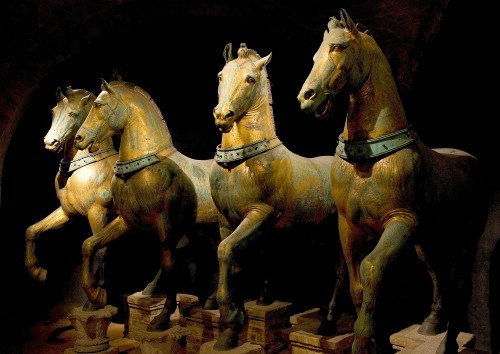

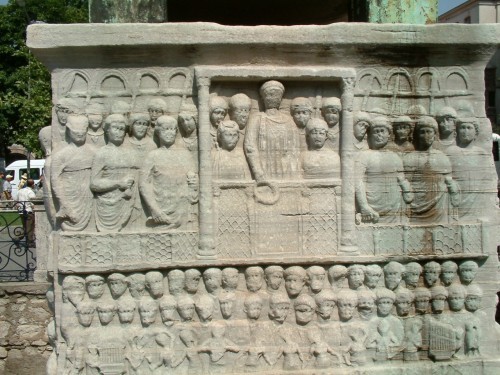
THE HIPPODROME OF CONSTANTINOPLE:
THE Hippodrome of Constantinople was an arena used for chariot racing throughout the Byzantine period. First built during the reign of Roman emperor Septimius Severus in the early 3rd century CE, the structure was made more grandiose by emperor Constantine I in the 4th century CE. The Hippodrome was also used for other public events such as parades, public executions and the public shaming of enemies of the emperor. Following the Fourth Crusade in the early 13th century CE, the Hippodrome fell out of use and its spectacular monuments and artworks were looted.
Many important Roman cities had an arena which, like the Circus Maximus of Rome, hosted thrilling chariot races for public entertainment. Byzantium (which would become Constantinople) was no exception, and Emperor Septimius Severus (r. 193-211 CE) funded the building of one there in the 3rd century CE. Constantine I (r. 306-337 CE) understood that the Hippodrome provided an unrivalled opportunity to show the people the emperor’s power, wealth, and generosity in lavish public entertainments that went on for days at a time, often coinciding with public holidays.
123 notes
·
View notes
Photo

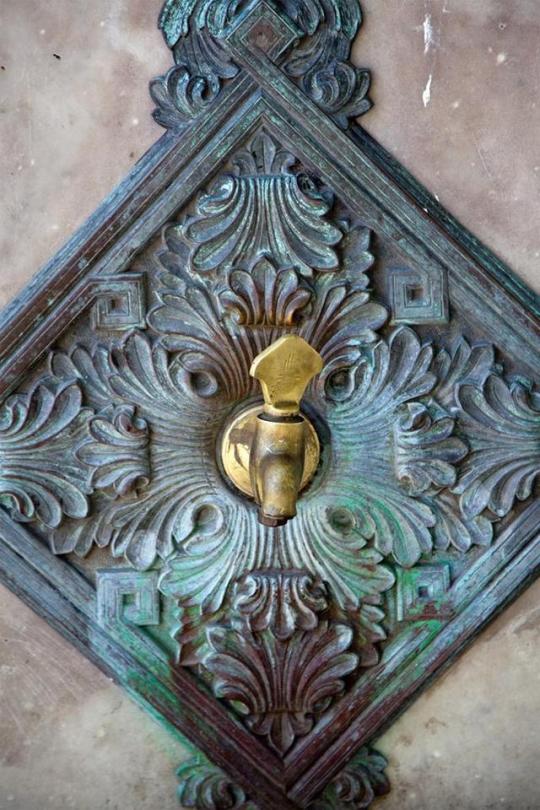

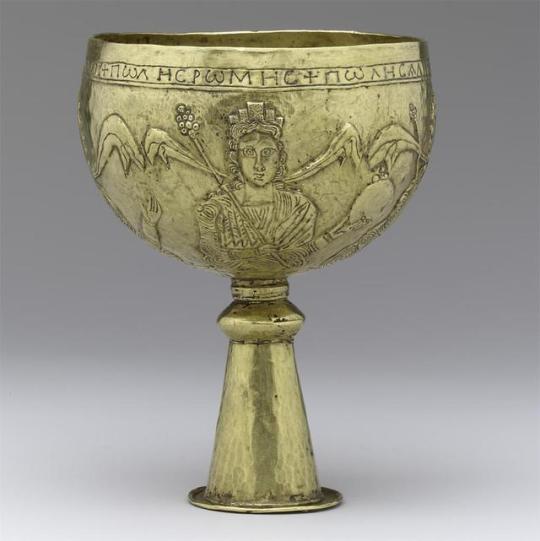


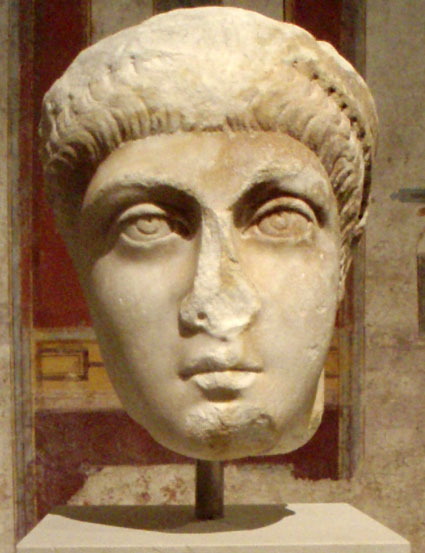
By Jean Marie Carey
10 December was an important date in the Byzantium of the 11th Century, as the Empire consolidated its own dynastic royalty while maintaining close contact with Rome and the politics of the Medieval church. On 10 December 1041, the emperor Michael IV the Paphlagonian died, ending a period of imperial intrigue and murder. Michael IV was rapidly succeeded on the throne of the Eastern Empire – on the same day in fact – by Michael V, the son of the legendary Empress Zoë. Four decades later Nikephoros III Botaneiates, who had been deposed as emperor, died on 10 December 1081.
The art and architecture of this period cannot be easily categorized as either Roman or Byzantine and often reflected the meeting of artisans and cultures as well as influences from Egypt, Germany, and China. The Hippodrome of Constantinople, for example, located in today's Sultanahmet Square, was an area that was the sporting and social center of Constantinople, during the Byzantine Imperial period. Only a few relics from the original Hippodrome survived. Horse racing and chariot racing probably took place in this area during the early Byzantine Period. Originally, the Hippodrome was built when the city was called Byzantium, circa 203, when Roman Emperor Septimius Severus rebuilt the city and expanded its walls, adding an arena for chariot races and other forms of entertainment. Circa 324, when Emperor Constantine I moved his capital city from Rome to Byzantium, he greatly enlarged the city, during which he also renovated the Hippodrome. Constantine's Hippodrome could host some 100,000 spectators. The Hippodrome features some interesting historical and other monuments, such as the Serpent Column, Obelisk of Thutmose III, the Walled Obelisk and the Kaiser Wilhelm German Fountain.
This free-blown flagon shown here is part of a tradition that begins in the First Century when glassworkers in or around Sidon, a city in Syria, discovered the blowpipe. Glass artistry had been around for many centuries, providing costly ornaments and containers for the upper classes of Egypt, Greece, and Rome, but the advent of blowpipe technology made glassware suddenly cheap and plentiful. The Syria/Palestine area became the center for glasswork in the world of the Late Roman Empire, with the bulk of it imported from that region throughout the various conquered nations. This particular flagon has been dated to approximately 750 and given a Byzantine origin, but it bears many similarities in approximate size, shape, and color to the earlier Late Roman imports of the Syro-Palestinian coastline.
Even after glass became common in the marketplace, the upper classes still preferred glassware that was vivid in hue, colored to resemble precious stones or treated so as to be completely colorless, while less costly were naturally a pale greeish tint, due to the presence of iron oxide in the mix of soda, lime, and silica necessary to create glass. Although the Late Roman tradition of glass design - including types of this particular flagon - did continue after the fall of the Roman Empire, the Byzantine period began featuring glass vessels of a more ornate character, in some cases the handle devolving into ornamental uselessness. The flagon has a utilitarian style that enjoyed a wide era of popularity. The spacious body and solid handle are imminently practical. Household items of this type were extremely commonplace; this flagon, probably used for serving liquids in the average home, was no exception.
Reference: James Howard-Johnston. “Byzantium and Its Neighbours” in The Oxford Handbook of Byzantine Studies. Oxford: Oxford University Press 2008.
Hippodrome of Constantinople, The Neo-Byzantine German Fountain, Established by Roman Emperor Septimius Severus; enlarged and renovated by Byzantine Emperor Constantine I. Originally established ca. 203; enlarged and renovated 324-337. Istanbul, Turkey. Photos: Shmuel Magal, Sites and Photos, Nrs. R51022603, R51022607, R51022612.
Goblet with Personifications of Rome, Constantinople, Alexandria, and Cyprus, c. 750. Found near Vrap, district of Pekinje, Albania in 1902. The Metropolitan Museum of Art, Nr. 17.190.1710.
Necklace with Medallion and Amulet, medallion: first half 5th century; amulet: 2nd century. Medallion: gold-wrought sheet; repoussé; wire-beaded. Pendant: gold-wrought sheet; wire-beaded; hematite. Chain: gold; wire-block twisted. Found in Piazza della Consolazione, Rome, Italy in 1908. The Metropolitan Museum of Art, Nr. 58.12.
Byzantine Free-Blown Flagon, 7th century. Portland Art Museum European Collection, Nr. 36.114.
Arcadius, first Emperor of the Eastern Roman (Byzantine) Empire, 390-400. Found in Rome. Photographer: Jürgen Liepe. Antikensammlung, Staatliche Museen zu Berlin.
Further Reading: Walter Pohl, Clemens Gantner, and Richard E. Payne. Visions of Community in the Post-Roman World: The West, Byzantium and the Islamic World, 300-1100. Burlington, VT : Ashgate, 2012.
Przemysław Marciniak and Dion Smythe. The Reception of Byzantium in European Culture Since 1500. Burlington, VT: Ashgate, 2015.
#otd#byzantium#byzantine#emperor#empress zoe#michael v#michael iv#hippodrome#medieval#roman#roman empire#byzantine empire#jewellery#flagon#glassware#istanbul#constantinople#art#italian#italian art#architecture#arcadius#portrait bust
75 notes
·
View notes
Text
Mausoleum of Augustus
Augustus' family tomb was clearly inspired by the burial mounds of the Etruscans such as those you can see at nearby Cerveteri (see Out of Rome). The Mausoleum had a chequered history as medieval fortress, would call a smart residential area; later it was taken over by the Emperors for their own residences.
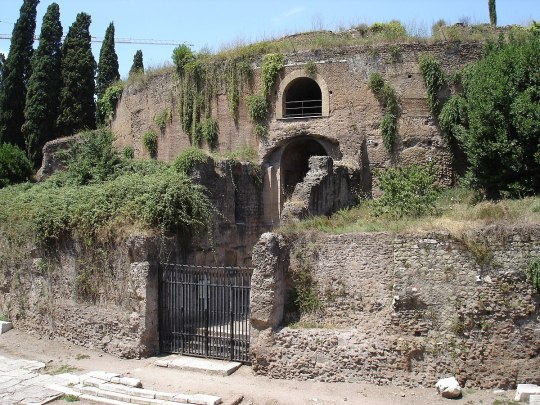
After Decline and Fall had set in, part of the Palatino became a pleasure garden of the Farnese family. Vineyards and vegetable plots nourished among the ruins. Now it is almost the only part of central Rome which gives you an idea of the rusticity of the city which lasted for many centuries until modern urban sprawl began to swallow up the past.

The general impression of the Palatino is more important than its archaeological detail which is difficult for the layman to decipher. The Palatino can conveniently form the subject of a separate visit from the Foro Romano but if you can only spare the time for one visit, do at least climb up to see the exceptional view over the Foro from the north-east corner of the hill. This is not far from the point where the legendary she-wolf was supposed to have suckled Romulus and Remus. In ancient times a shrine marked the spot. In modern times a rather seedy she-wolf was kept in a cage but someone forgot to feed her. The cage has now been empty for many years.

Tiberius was the first emperor to build his palace on the Palatino. The ruins of Domitian's residence are the largest single group of archaeological remains. They include a private stadium and Domitian's dining-rooms. Septimius Severus built baths as well as a palace here.
There is a fine view to be obtained from the ruins of the former Imperial box overlooking the Circus Maximus racetrack. Try to visualize the scene below the garlanded Emperor as he presided over a day of hectic chariot races. If you find this difficult, fill in the details for yourself with a book called Daily Life in Ancient Rome by Jerome Carcopino, a former director of the French Academy in Rome, who gives a rich and detailed picture of what life must have been like in the ancient city.
Before leaving the Palatino do not fail to visit the Casa di Livia (Livia's House) to see some fine examples of interior decoration of a Roman house. The contrast between the delicate fresco painting and the grandiose ruins around could not be more striking. If Augustus and his Empress did not actually live in this house, this was the sort of decor with which they were familiar.
Photo Credit: Colosseum Rome Tickets
0 notes
Text
100 Days of Trump Day 64: Fallout New Vegas
Edit: Of all the 100 Days of Trump i’ve done, this one has gotten the most response, I suspect because most Alt Rightists haven’t heard of anything I reference except Fallout New Vegas. Also they keep saying its bullshit but can’t actually point to any specific fact to dispute because you know...morons
Welcome Back to 100 Days of Trump, where I try to explain WTF happened in 2016 through 100 works of fiction, and I think we haven’t had quite enough video games in the last three days, lets talk fallout. Now the Fallout series has a lot of depth, good characters, fun gameplay and interesting ideas so generally I recommend all of it....except Fallout 3....and Fallout 4....and Brotherhood of Steel.....Ok really just the first two games and this one, but the point is only New Vegas is really relevant to Trump, but play the first two if you like classic RPGs.
So everybody knows that Fallout is a post nuclear world, but the premise of the...good games is that society collapsed.....nothing really changed. People are exactly the same just with less fancy houses and and the sins of the Old World continue on to the future. So ok, sounds like post Great Recession America, how is this about Trump? Well FallOut New Vegas is about the player being trapped between three factions
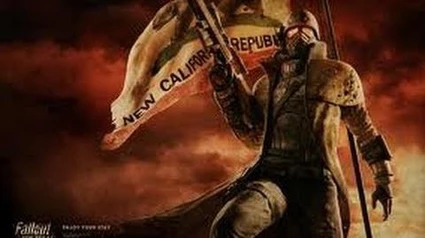
Caesar's Legion, a violent reactionary sexist, racist, right wing militant extremist group who advocate racial supremacy, and a return to an idealized past that never existed.
The New Californian Republic, A bunch of corrupt moderates who couch their language in the ideals of democracy and progressive ideals but are duplicitous, warmongering, and have become increasingly sexist, racist, classist, and undemocratic but look good compared to the first group.
Mr. House, a completely amoral rich plutocrat whose utter selfishness and open hostility to submitting to any form of control are mixed with surprisingly progressive social policies and honest look at the problems.
So New Vegas is an alternate universe if Bloomberg actually ran third party, and Trump wasn’t a complete idiot.
Today though, I want to focus on Caesar’s Legion. One of the themes of New Vegas is even though the US has been wiped out, everybody is clinging to symbols of the past, clinging to them out of context and justifying their actions by claiming continuity with the past. The NCR claims to literally be the US goverment despite a century long gap between the fall of the US and the NCR’s founding, or the fact that it doesn’t use our constitution, or the fact that it is only located in California. And its desire to seize control of all the American land means it prioritizes war over its citizen’s well being (stop me if this sounds familiar). Mr. House is determined to preserve the culture of Las Vegas, or rather the way we imagine Las Vegas, with all of the actual realities of Vegas culture removed, its the city center without the city around it, forcibly preserved by an immortal dictator. All the factions try to link themselves to a mystical past (a past we know is utterly whitewashed cause its our present), but the worst of them all, is Caesar’s Legion

See, Edward Sallow was a history nut of the old world when he read about the Roman Empire, and sought to recreate it anew in post apocalyptic Nevada, arguing that since Rome is the foundation of Western Civilization, a return to true Western Greatness. Wherever they go, they bring cultural purity, slavery, Roman era gender relations, and require absolute conformity to their way of life. According to Caesar
“Pax Romana=It means a nationalist, imperialist, totalitarian, homo genius culture that obliterates the identity of every group it conquers. Long term stability at all costs. The individual has no value beyond his utility to the state, whether as an instrument of war or production”
youtube
But here is the thing, speaking as a big roman history nut.....THAT ISN’T TRUE. Pax Romonus means “Roman Peace” and means just that, peace. Rome was an Imperialistic, slave owning, genocidal empire that could be extraordinarily brutal, but guess what? It wasn’t nationalistic, the Roman Empire was always borrowing ideas from other cultured cultures in order to improve their empire, it was extremely multicultural and interventionist. I mean
The Roman Navy was Carthaginian
The Roman Gods were Greek
Later they converted to a monotheistic Sect from Judea
For a while they worshiped a Syrian god named Sol Invictus
Most of the Elites Spoke Greek
The Roman Legionary Structure was influenced by the neighboring Samnites
The roman Calvary was almost always Gallic, North Africa, German or Syria
Trajan and Hadrien were Spanish
The Severun dynasty was North African/Syrian (and btw the dynasty that most resembled New Vegas)
The Ilyrian Emperors who saved rome from the Crisis of the Third Century AD, like Aurelian, Diocletion, Claudius Gothicus) were from the Balkans
Constantine was Balkan/British
Flavius Aetius (who defeated Atilla the Hun) was Scythian
Justinian and Belisarius weren’t Latin Roman
Hell after a certain point, almost none of the Emperors are Roman any more, instead they are German, or Hunnic, Syrian or Raba, Spanish or African, Gaulic or Balkan, non Roman Italian,
In fact, one of the main reasons why Western Roman Empire fell is that it didn’t allow the various Gothic/Germanic strongmen to become Emperor in their own RIght.
Rome was never a homogeneous unchanging culture, from Romulus to Constantine XI Roman is defined by its capacity to change and adapt, and its multi cultural empire gave it a lot of ideas to draw upon. And when you look at White Nationalists today who fetishist Rome, it is a rome they don’t understand. By the Way, that Hegelian view of history, that is believed by Steave Bannon.
Also...the transformation to dictatorship doesn’t go as Caesar claims, cause guess what? Julius Caesar didn’t invade a foreign nation to become Emperor, he had a civil war with his own country. And Augustus Caesar took pains to ensure that his Empire was a soft and nonthreatening as possible, the more authoritarian emperors like Septimius Severus were terrible rulers whose regimes fell into civil war and chaos.
Also The Julians didn’t claim to be “Son of Mars” they claimed to be descended from Venus Goddess of Love, hence her role in the Aeneid.

This is the foundation of the Roman Imperium, the Goddess of Love
Also Rome didn’t emerge out of a harsh brutal land to fight against the weak fat settled people, Rome emerged in Central Italy, a lush fertile climate. Hell according to legend, Rome was founded by the refuse and exiles from all the surrounding societies, who came to Rome for a second chance and married Sabine women. Honestly Caesar (the in game Caesar no real life, Julius Caesar) seems to be confusing Rome with Sparta, and which of those two civilizations conquered the known world? I’ll give you a hint, it wasn’t the one with the eugenics model. It was the one with the independent aristocracy, and a Republic who did most of the conquest of Rome. This is a map of Rome at its height
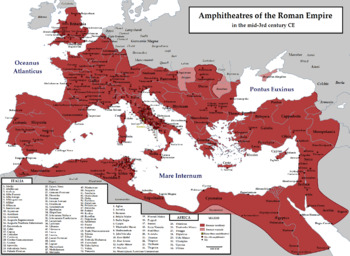
and this is how much of that was taken by the Republic, not the empire
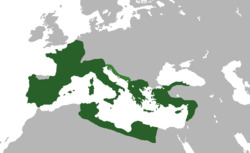
That is more than half, and a great deal of the remaining was conquered by Emperor Claudius, you know, this guy?
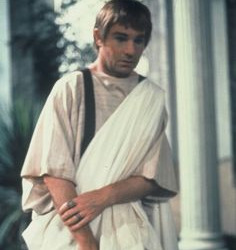
the one with the limp and the stammer and the twitch. The Empire mostly fought Romans, it was the Republic that did the real conquering. To say nothing of the road building.
And when the Legion tries to Cosplay as Real Rome, it never quite matches the true stories.
youtube
This stories resembles Roman propaganda, except...Rome rarely wiped out the entire population, in fact their empire was supported by a network of client kingdoms who betrayed their former rulers to side with Rome. One of the most important pieces of Roman rule that if you surrendered, you were treated fairly, if you fought a bit and then surrendered, you were treated well. If you fought to the death, stuck to your principles as Vulpes implies, then you were wiped out. Just ask the Jews at Masada how Rome respects those who fight to the last.
So we have a violent, militant, reactionary culture fetishistic a past that never truly existed and they don’t seem to understand to justify extreme racism, violence, and horrifying sexism in order to fight against a corrupt hypocritical but far less awful democratic regime. Sound Familiar

oh.....well that too but also this

Those who idealize history are always those who understand it the least, and New Vegas for all its buggy often frustrating gameplay glory, understands what happens when history is co-opted by those who don’t understand it but wish to use the symbols of nostalgia to justify their own atrocities. Isn’t that Right Ulysses, so named after the man who traveled the ocean for 10 year trying to find home and then freed all the Slave?
youtube
Edit: I also want to talk about this real quick
youtube
Yeah that whole “War is great for its own sake” macho bullshit? The Romans weren’t so into that, they were much more into “Hey, work for us, and you can keep all your stuff” There is a reason why all of the ancient rome spoke of Roman Treachery.
The Pax was about law and order, not about conquest and survival of the fittest, I mean the entire point of the Aenied is rejecting the Illiad’s macho warrior culture mentality
#100 Days of Trump#Fallout#fallout: new vegas#Caesar's Legion#NCR#new california republic#Las Vegas#New Vegas#christ avellone#Mr. House#ISIS#Steave Bannon#Siege of Masada#Roman Empire#Cultural Appropration#Gamergate#Nostalgia#Alt Right#Neo Reactionary#White Nationalist#race realist#Racism#Five Good Emperors#pax romanus#Legate Lanius#Vulpes Inculta
367 notes
·
View notes
Text
Pronouncing Severus: AARGH!
Years ago now, I got into a heated debate about the pronunciation of the name ‘Severus’. Since it is obviously a Latin name, and the root of the English word ‘severe’, I argued that the stress should be on the second syllable - because that’s where the stress is in Latin. Severus should be pronounced \sə-ˈvir-əs\. It’s only logical.
I am not a native speaker of English, so native speakers told me I got it all wrong because in English, the stress is generally placed on the first syllable. Now, I’m not a nincompoop, and it so happens that 1) I speak a Germanic language, namely Dutch, and 2) I studied English and German at university. I know very well that in English, like in other Germanic languages such as Dutch and German, the general rule is that the first syllable receives the stress. But not ALL words in English, Dutch and German have initial syllable stress. One notable exception is the English word ‘severe’. It is the same word as the French ‘sévère’ and the Latin ‘severus’. It’s a loan word. And it has kept its original stress. So should the name ‘Severus’, as it comes straight from Latin. It hasn’t even been anglicised in the fashion of ‘Ovid’ (stress on the first syllable; the Latin original, ‘Ovidius’, takes second-syllable stress).
The English speakers I talked to told me that what I said was complete rubbish. When I referred to Merriam Webster’s very helpful soundbite, they replied that nobody believes a dictionary. Useless things, dictionaries. Then one of my online friends delivered the final blow by saying that she’d asked her old Latin teacher, who’d confirmed that Severus is pronounced just like they do it in the films: that atrocious sever-us that completely ignores the fact that we are talking about the word ‘severe’.
I said to myself, “what a rubbish Latin teacher”, and I stuck to my guns. Now, today I was reminded of the whole discussion again as I watched the final part of Alastair Sooke’s documentary on Roman art. Sooke kept saying ‘Septimius Sever-us’ and ‘Alexander Sever-us’. COME ON! I mean, if you want to insist on saying ‘Sever-us Snape because he’s an Englishman and maybe his mum and dad didn’t have a clue about Latin scansion - okay! I don’t like it, but whatever. But are you seriously talking about a Roman emperor in a programme about Romans and calling him Sep’timius (see! you can place the stress on the second syllable there! well done!) ‘Sever-us... NOOOOOOOOO!
Is there nobody in the English-speaking world who knows a thing about stress in Latin? What do English speakers do when they want to scan Latin poetry? Do they even know how to do scansion? In any case, if they place the stress on every first syllable as a matter of course, their metre is going to look pretty weird?!
I don’t understand. I really don’t understand. Someone enlighten me please.
5 notes
·
View notes
Photo
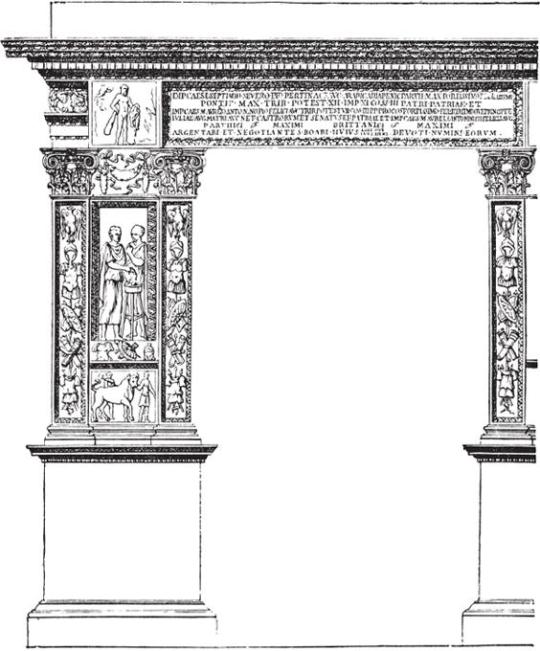


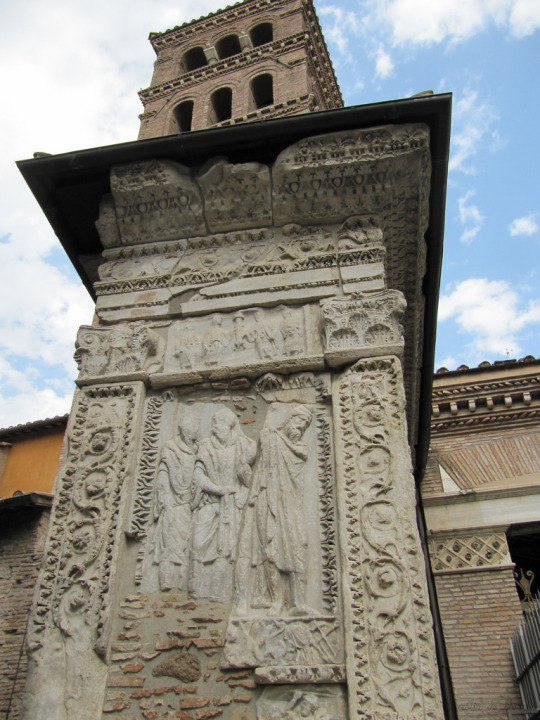

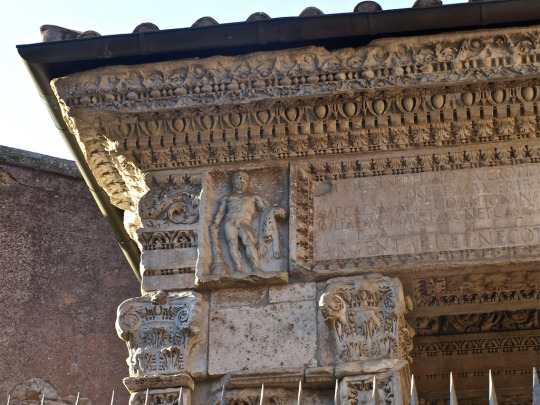

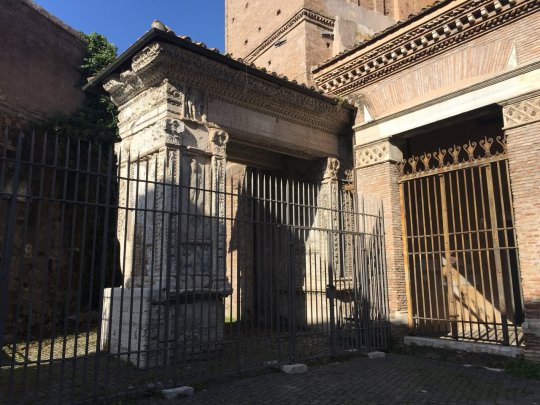

Arcus Argentariorum (Money-changers)
Rome
204 CE
6.15 m high, 3.3 m wide
Its actual purpose is unknown, but the most probable scenario is that it formed a monumental gate where the vicus Jugarius entered the Forum Boarium. As the dedicatory inscription says, it was commissioned not by the state or emperor, but by the local money-changers (argentarii) and merchants (negotiantes), in honour of Septimius Severus and his family. The top was possibly once decorated with statues of the imperial family, now long gone.
It is built of white marble, except for the base which is of travertine. The dedicatory inscription is framed by two bas-reliefs representing Hercules and a genius. The panels lining the passage present two sacrificial scenes - on the right/east, Septimius Severus, Julia Domna and Geta, on the left/west side Caracalla with his wife and father in law Fulvia Plautilla and Gaius Fulvius Plautianus.
The figures of Caracalla's brother, father in law and wife on the passage panels and on the banners on the outside, and their names on the dedicatory inscription, were chiselled out after Caracalla seized sole power and assassinated them.
These sacrificial scenes gave rise to the popular but incorrect saying about the arch that
Tra la vacca e il toro, troverai un gran tesoro
(Between the cow and the bull - i.e., within the arch - , you'll find a great treasure).
This led past treasure-hunters to drill many holes in it, which are still visible.
Above the main reliefs, are smaller panels with Victories or eagles holding up victors' wreaths, and beneath them more sacrificial scenes. The external decoration of the pillars includes soldiers, barbarian prisoners, military banners (with busts of the imperial family) and a now damaged figure in a short tunic
#art#Architecture#travel#history#roman#rome#roma#italy#italian#europe#corinthian#arch#gate#2 ce#septimius severus#roman architecture#roman art
88 notes
·
View notes
Text
Roman coins star in January sale
One of numerous mint state Roman Imperial aurei to be offered by Heritage Auctions at NYINC in January: choice Maximian (286-310 C.E.) first reign aureus (Calicó 4661). In NGC Choice MS 5/5 – 4/5, Fine Style, it carries an estimate of $10,000-$20,000. (Images courtesy and © www.ha.com)
For collectors of Roman coins, Heritage’s January 2019 NYINC sale of the first tranche of the Morris Collection is a must.
This is an extraordinary assemblage of coins. It covers the entire Roman Imperial series, from its beginnings with Augustus (27 B.C.E.-14 C.E.) to the end with Romulus Augustulus (475-476 C.E.). Rarities are the norm. A number are likely unique. Many have been off the market for decades.
The New York sale will see approximately 300 of the top coins presented in a stand-alone session. It is difficult to know where to start in describing the depth and absolute quality of these specimens. There is room to mention only a few.
They include gold multiple solidi of Constantine the Great (307-337 C.E.), eye-catching sestertii, and extremely rare denarii – including an impressive selection of Trajan (98-117 C.E.) restitution issues.
But stars of the show have to be the superb collection of mint state imperial aurei. Of these, three examples will have to suffice.
A 21 mm, 5.97 g aureus of 278 C.E. (RIC V.II; Calicò 5146) displays a laureate bust of Emperor Probus (276-282 C.E.) while on the reverse Hercules shoulders the captured Erymanthian boar. Graded NGC MS Star 5/5-4/5, Fine Style, it goes to the block with a $10,000-$20,000 estimate.
This same estimate is carried by a superb first reign Maximian (286-310 C.E.) 18 mm, 5.59 g aureus (RIC-unknown at time of publication; Calicó 4661). On the obverse, the co-emperor sports a lion skin. On the reverse, Hercules battles the Lernaean Hydra. It bears a most desirable NGC Choice MS 5/5 – 4/5, Fine Style grade.
Very rare aureus (RIC IV.I 175. Calicó 2589a) of Emperor Septimius Severus showing his wife Julia Domna and sons Caracalla and Geta on the reverse. In exceptional NGC Choice MS Star 5/5 – 5/5, Fine Style condition, the estimate is $20,000-30,000. (Images courtesy and © www.ha.com)
And, as was to be expected, the family Severus (193-211 C.E.) is to the fore. Among these coins is a very rare dynastic aureus, 20mm, 7.27 g (RIC IV.I 175. Calicó 2589a – this coin but misdescribed). The obverse shows a laureate bust of the “African Emperor,” Septimius Severus, himself. The reverse has his wife Julia Domna flanked by her sons Caracalla and Geta. Struck in Rome from dies of exceptional style, it comes with a flashy luster and a top NGC Choice MS Star 5/5–5/5, Fine Style grade. Consequently, the estimate is a not unexpected $20,000-30,000.
The period of the Late Roman emperors is well represented. It includes a siliqua of Maximus of Spain (409-411 C.E.) and gold issues of Justa Grata Honoria (440-450 C.E.), Petronius Maximus (455 C.E.), Avitus (455-456 C.E.), and, of course, Romulus Augustulus.
Typical of the quality and rarity shown by these items is an elusive 13 mm, 1.46 g gold tremissis (RIC X 2406) of Avitus (455-456 C.E.). It carries a NGC Choice XF 4/5–4/5 grade along with a modest $4,000-$5,000 estimate.
And while the main focus of the collection is Roman Imperial, there are other astonishing rarities such as those from the Roman Egypt series. Examples include extraordinarily rare 193 C.E. Alexandrian issues of Titiana and her son Pertinax Junior, both pedigreed to the Dattari Collection.
For Pertinax Junior, there is a 28 mm, 10.44 g Year 1 bronze hemidrachm showing him as Caesar (Dattari 3981 – this coin). Graded NGC Fine 4/5-2/5, this is probably the sole known example. The estimate is a conservative $3,000-$4,000.
His mother is best represented by a 25 mm, 8.16 g, bronze diobol, also possibly unique. It grades NGC Fine 4/5–4/5.
But there are some further 294 other trophy coins contained in the catalog.
Readers are urged to check all the above details, including estimates, in either the printed version or online at www.ha.com.
Following the New York sale, the remainder of the Morris collection will be sold through dedicated monthly Internet auctions throughout 2019.
This article was originally printed in World Coin News. >> Subscribe today.
If you like what you’ve read here, we invite you to visit our online bookstore to learn more about Coins Magazine.
Learn more >>>
NumismaticNews.net is a participant in the Amazon Services LLC Associates Program, an affiliate advertising program designed to provide a means for sites to earn advertising fees by advertising and linking to Amazon.com and affiliated websites.
The post Roman coins star in January sale appeared first on Numismatic News.
0 notes
Link
After Caesar Augustus gained complete control in 27 B.C. and became the first Roman Emperor, he established the Praetorian Guard for his personal protection. Over the next three centuries, the Guard exploited its nexus to the seat of power for its own interest and aggrandizement. Most notably, the Praetorians schemed and interfered with Roman politics to the point of overthrowing emperors and proclaiming their successors.
In 193 A.D., Emperor Septimius Severus tried to disband the Praetorian Guard, but his reorganization of the Guard did not last as it regained power after his death. In 306 A.D., amidst turmoil among a tetrarchy of Roman emperors, the Praetorians turned to Maxentius and proclaimed him their emperor. In 312 A.D., Constantine the Great defeated Maxentius at the Battle of the Milvian Bridge to gain control of the Western Roman Empire. After the death of Maxentius at the battle, Constantine put an end to the Praetorian Guard by destroying their barracks and dispatching their soldiers to the outskirts of the Roman Empire.
Flash forward to the early 21st century in the U.S. and we see a replay of this sordid Roman history repeating itself with the modern-day Praetorian Guard that holds sway within the Federal Bureau of Investigation and the U.S. Department of Justice. Prior to the 2016 presidential election, FBI and DOJ leaders sought to influence the election by favoring one presidential candidate (Hillary Clinton) and undermining her opponent (Donald Trump). They were so sure Clinton would be elected that they clumsily perverted justice to ensure that outcome.
This is exactly what the Roman Praetorians did two millennia ago when they hand-picked the emperors they favored time and time again. They expected to be rewarded by the grateful emperor, who would invariably shower them with gifts and power. For centuries, this rigged system of government worked extremely well for the Roman Praetorians until they overplayed their hand. Ultimately, they picked the wrong emperor, which led to their ignominious demise. As it was then, so it is now.
.
Their strong bias for one candidate over another has come to light despite the yeoman efforts of FBI and DOJ management to stonewall record requests from congress and Freedom of Information Act requests from citizen advocacy groups such as Judicial Watch. The FBI and DOJ constantly hide behind self-serving excuses to refuse the release of documents and, when forced to do so, they release heavily redacted files. They offer up the usual pretexts to fend off public disclosure such as: the information you seek cannot be disclosed because it involves an ongoing investigation, or the information you seek involves national security, or our methods and sources will be jeopardized if the information you seek is divulged to the public. But it seems the ones who would be most harmed by public disclosure are the corrupt FBI and DOJ officials themselves, who are trying desperately to keep from embarrassing themselves, or revealing how they played politics by weaponizing our justice system.
Nonetheless, the truth has a way of surfacing through the cracks. Narrow cracks turn into deep fissures and fissures turn into a chasms. Although it may take longer than we like, the truth ultimately wins out. We can see it unfolding at the FBI and the DOJ as the corrupt officials are fired, resign, or are re-assigned. The tide has receded and the naked bodies at the FBI and the DOJ can be seen floundering on the beach. Soon they will turn on each other in much the same way they try to flip witnesses against each other. It's the beginning of the end.
The Praetorians at the FBI and the DOJ, who fixed the Clinton investigation and sought to frame a sitting president, have no place in our justice system, except inside its correctional facilities where they belong.
0 notes